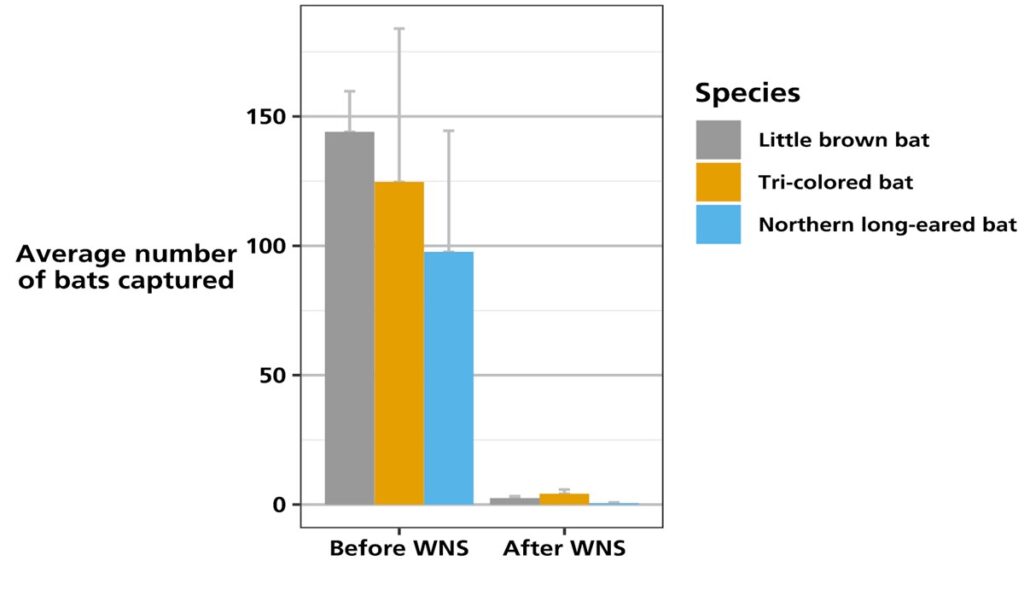New Brunswick’s Tri-coloured bats have fallen in the raging battle between North America’s bats and the White Nose Syndrome. The declaration of the demise of New Brunswick’s tri-coloured bats was made by zoologist Donald Macalpine in a CBC news report on April 19, 2018. Bats have been losing the battle and if we are to save our species in Ajax we must take action now. A crucial element in this process must be the application of humane bat control techniques on Ajax properties.
The Devastation of New Brunswick’s Tri-coloured bats
The White Nose Syndrome is a disease that attacks hibernating bats. Bats in hibernation are particularly vulnerable. The disease interrupts the bats’ hibernation process and this, in turn, causes the animals to use up their fat stores more speedily. As a result, the bats starve to death before the winter is over. Although there hasn’t been an official count of bats since 2013, Macalpine opines that the bats are likely extinct in New Brunswick because they haven’t been spotted in hibernation caves since 2013. And now Ajax’s bats are facing a similar fate.

Why We Need Our Bats
Ontario is home to a number of bats including the Tri-coloured bat, little brown bat, the big brown bat, and the silver-haired bat. If we lose our bats, we will lose a lot more soon after. Bats prey on insects like mosquitoes and moths. If the bats disappear the insect population will multiply unchecked. The tri-coloured bat, in particular, is known to feast on a wide variety of winged insects. When you consider that a bat can eat up to three times its body weight in insects, you’ll no doubt recognize that this is quite an extraordinary contribution. Bats also help to reforest our green spaces by flying around and dropping seeds which later germinate and become trees. When they are gone we will have less of those green spaces and of course, the spinoff effects will result in a harsher environment for all of us. Essentially, the ecosystem will be left lacking many salient elements for maintenance and regeneration and the environment we depend on for our very survival will become unstable. For our own sake, we must protect our bats. And we must start now. The disease had first reared its ugly head in 2011 and just seven years later the declaration of the demise of the bat population came.
How to Help Save Our Bats
Saving Ajax’s bats is a job for each resident. We can start by ensuring that we look out for sick bats and let the authorities know immediately when we see them. Bats frequent forest edges and water sources. They are not fond of human-occupied spaces and as such, they don’t normally fly into homes or offices. Instead, they remain in traditional bat roosts such as caves and forested areas. A bat that is flying around in the day or in the winter is very likely to be sick, possibly as a result of the infamous White Nose Syndrome. Sightings of dead bats must also be reported promptly. The sooner cases of suspected White Nose Syndrome are picked up by wildlife authorities, the sooner the ailment can be tackled.
Since our bats are already buckling under the attack of the White Nose Syndrome, let’s not add to their struggle by being cruel to them on those rare occasions when they might they wind up in our Ajax homes and offices. Instead, let us opt for the services of humane bat control service providers like Skedaddle to keep our Ajax properties bat free.




